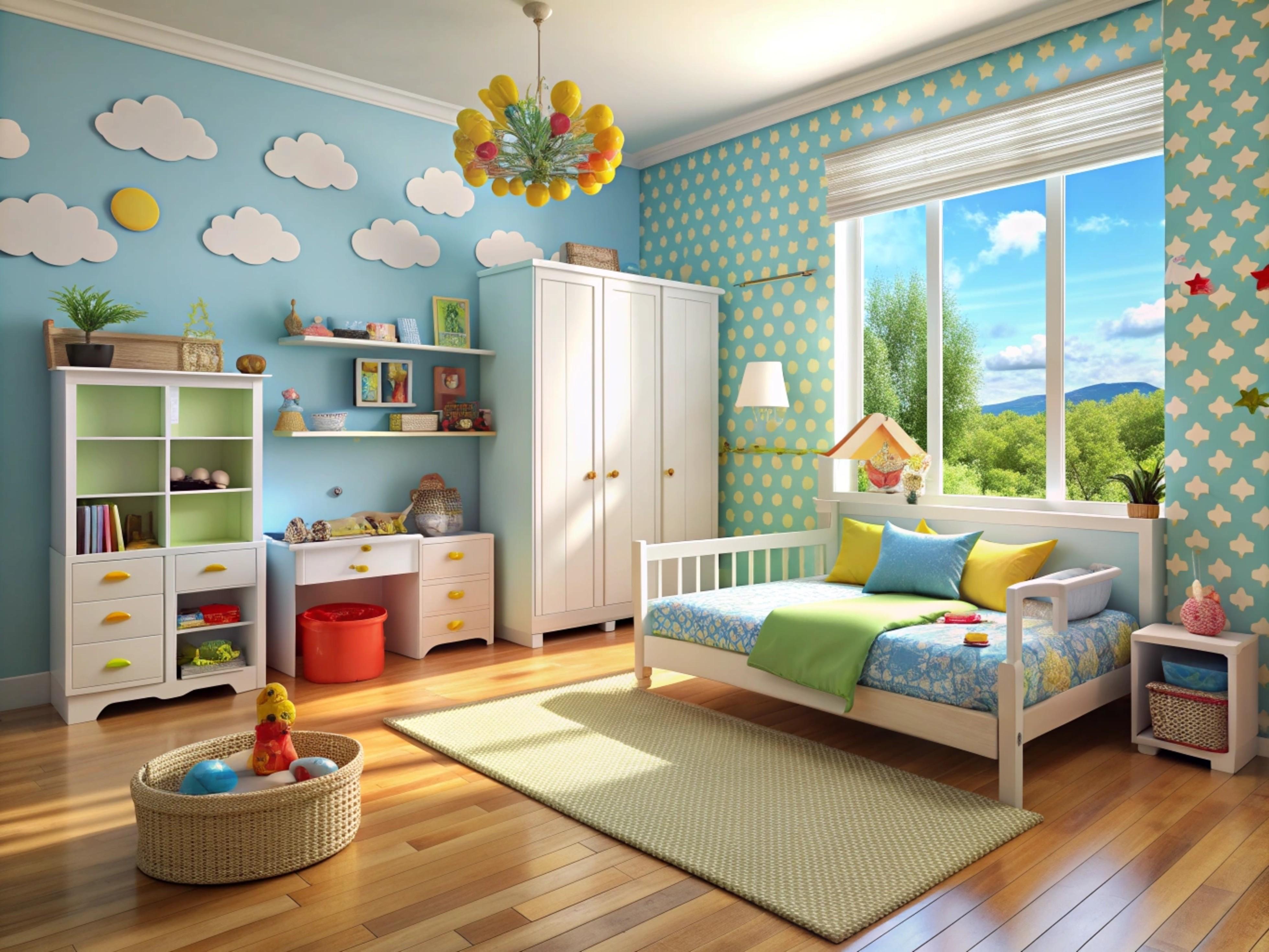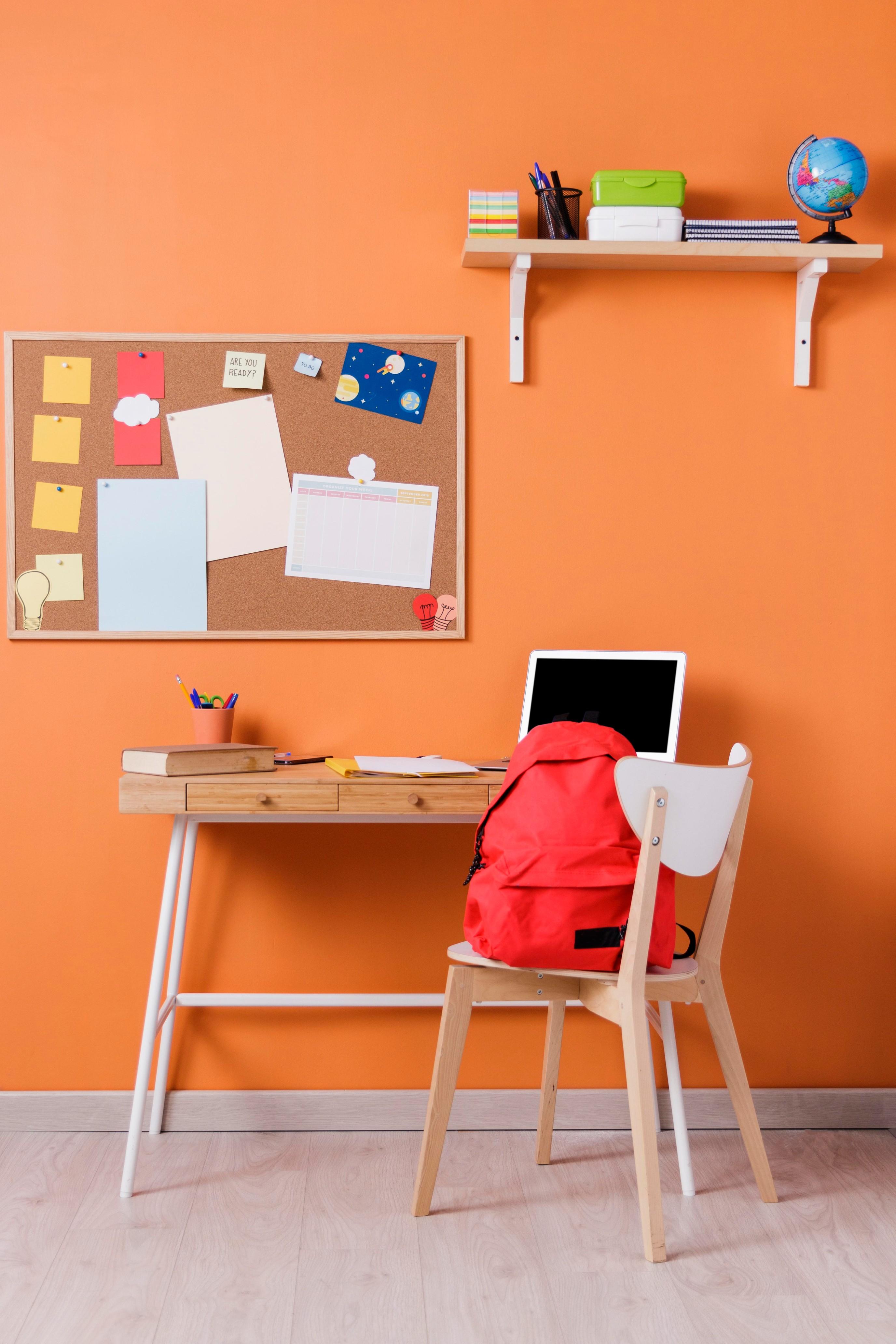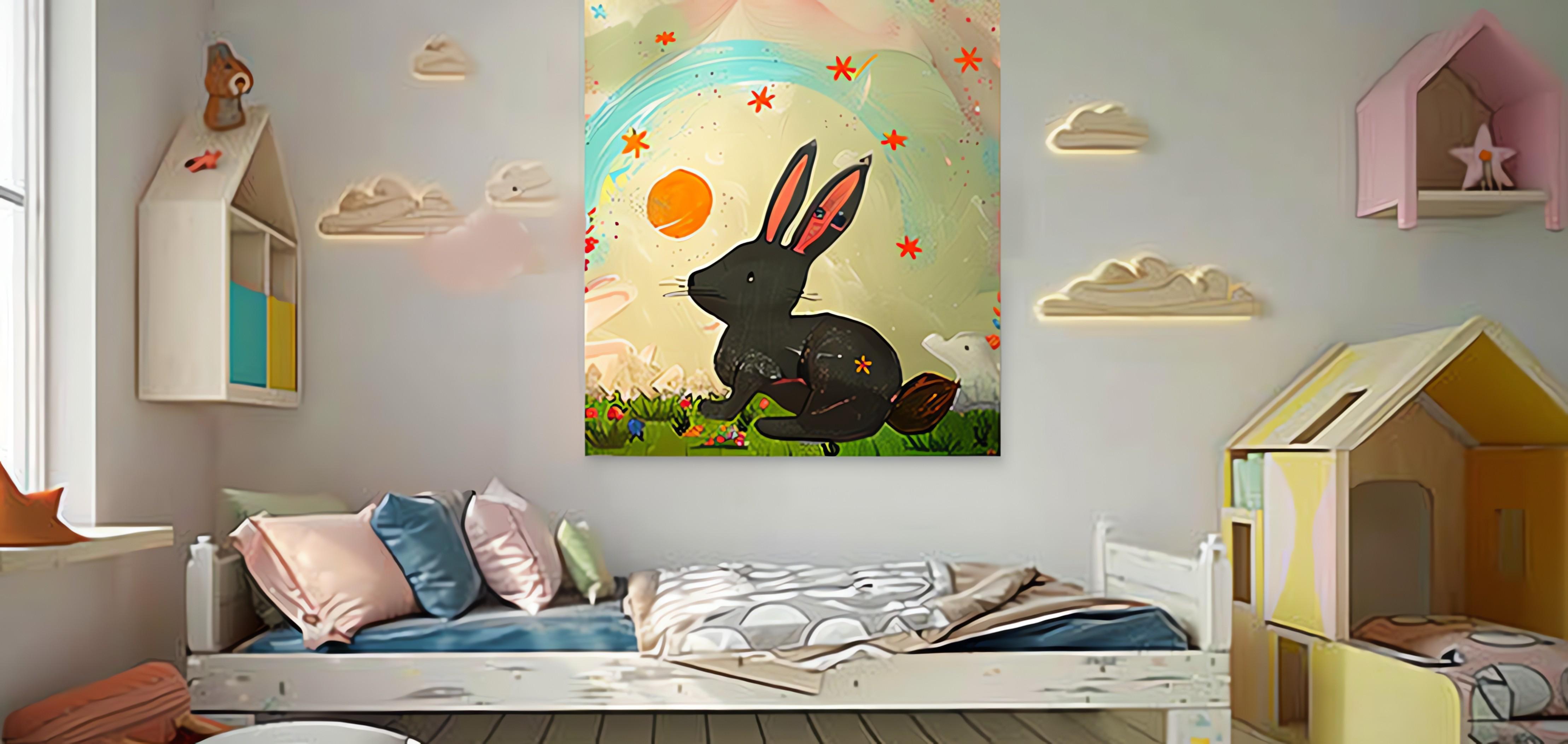



Table of Contents
- Understanding Vastu Shastra
- Key Vastu Principles for Kids' Rooms - Room Location
- Bed Placement
- Door Orientation
- Study Area
- Color Scheme
- Avoiding Mirrors
- Avoiding Clutter
- Lighting
- Artwork and Decor
- Conclusion
- Faq's
Vastu Shastra, the ancient Indian science of architecture and design, emphasises the importance of spatial arrangement and its impact on the inhabitants' well-being. When it comes to children's rooms, Vastu principles can help create an environment that nurtures growth, creativity, and harmony. This article explores the essential Vastu guidelines for designing a kid's room, ensuring it becomes a sanctuary for play, study, and rest.
Understanding Vastu Shastra
Vastu Shastra is rooted in the belief that the arrangement of space affects the flow of energy, or "prana," influencing the physical and mental health of its occupants. Each direction in Vastu is associated with specific elements and energies, which can be harnessed to create a balanced environment. For children's rooms, applying these principles can foster a positive atmosphere conducive to their development.

Key Vastu Principles for Kids' Rooms - Room Location

The location of a child's bedroom plays a crucial role in their overall development and well-being. According to Vastu Shastra, the western part of the house is considered ideal for a child's room.
This placement is believed to promote stability and security, essential for a child's emotional and psychological growth. The west is associated with the element of earth, which symbolises grounding and support. Children sleeping in this direction are thought to feel more secure and protected, allowing for better sleep and a more restful environment.
Alternatively, the southwest corner of the house is also auspicious for a child's bedroom. This area is linked to the energy of stability and strength, providing a solid foundation for the child's growth. It is believed that a southwest bedroom can help instill discipline and responsibility in children, qualities that are essential as they navigate their formative years.
When selecting the location of the room, consider the surrounding environment as well. A room that overlooks a garden or open space can provide a sense of freedom and connection to nature, which is beneficial for a child's mental health. Avoid placing the room near noisy areas such as the living room or kitchen, as excessive noise can disrupt a child's sleep and concentration.
Bed Placement
The placement of the bed in a child's room is one of the most critical aspects of Vastu Shastra. According to these principles, the bed should ideally be positioned in the southwest corner of the room.
This placement is believed to promote restful sleep and overall health. When children sleep with their heads facing either east or south, it is thought to enhance their physical and mental well-being. The east is associated with the rising sun and is considered a source of positive energy, while the south is linked to stability and grounding.
It is also essential to avoid placing the bed directly in line with the door. This alignment can create a sense of vulnerability and anxiety, as it may feel like the child is exposed to external disturbances. Instead, position the bed in a way that allows the child to see the door while still feeling secure.
Additionally, the bed should be placed away from windows to minimise disturbances from outside noise and light. Heavy curtains can be used to block out excess light and create a cozy sleeping environment.
Parents should also consider the type of bed frame. Wooden beds are preferred in Vastu, as they are believed to provide stability and support. Avoid metal beds, as they are thought to create restlessness and disrupt sleep.
Door Orientation
The orientation of the door to a child's room is another essential aspect of Vastu Shastra. Ideally, the entrance should face east, allowing morning sunlight to flood the room. This orientation is believed to fill the space with positive energy and vitality, which can significantly impact a child's mood and overall well-being. Morning sunlight is known to boost serotonin levels, which can enhance mood and promote a sense of happiness and well-being.
The door should open in a clockwise direction, which is considered auspicious in Vastu. This orientation is believed to facilitate the flow of positive energy into the room. It is also advisable to keep the area around the door clear of clutter, as this ensures that energy can flow freely into the space.
Avoid placing any signs or boards on the door, as these can attract negative energy. Instead, consider using a simple, welcoming design that reflects positivity. The door should be sturdy and well-maintained, as a strong entrance symbolises protection and security for the child.
Additionally, consider the overall aesthetics of the door and its surroundings. A bright, cheerful color can enhance the welcoming atmosphere of the room, while decorative elements like a small welcome mat can add a personal touch.
Study Area

Creating a conducive study area within a child's room is essential for fostering concentration and creativity. According to Vastu Shastra, the study table should be placed in the west or southwest corner of the room. This positioning allows children to face north or east while studying, which is believed to enhance focus and cognitive abilities. The north is associated with the element of water, symbolising knowledge and wisdom, while the east represents enlightenment and positivity.
A well-organised and clutter-free study area is crucial for promoting a clear mind. Parents should encourage their children to keep their study spaces tidy, as a clean environment can significantly enhance concentration and productivity. Incorporating storage solutions like shelves or bins can help maintain organization and reduce distractions.
Lighting is another vital aspect of the study area. Ensure that the space is well-lit, ideally with a combination of natural and artificial light. A desk lamp with adjustable brightness can be beneficial for late-night study sessions, while natural light during the day can boost mood and energy levels.
Consider adding personal touches to the study area, such as motivational quotes or artwork that inspires creativity. This can help create a positive atmosphere that encourages learning and exploration. Additionally, incorporating elements like a corkboard or whiteboard can allow children to visualise their goals and tasks, further enhancing their study experience.
In conclusion, a thoughtfully designed study area that adheres to Vastu principles can significantly impact a child's academic performance and creativity. By providing a conducive environment, parents can foster a love for learning and exploration.
Color Scheme
The color scheme of a child's room is more than just a matter of aesthetics; it can profoundly influence a child's mood, behavior, and overall well-being. According to Vastu Shastra, soft, soothing colors like light green and light yellow are highly recommended for children's rooms.
These colors are associated with tranquility, positivity, and creativity, helping to create a calming atmosphere that promotes relaxation and focus.
Light green, representing nature and growth, can instill a sense of peace and balance, making it an excellent choice for a child's bedroom. It is believed to enhance concentration and foster a nurturing environment. Similarly, light yellow is associated with joy and optimism, stimulating creativity and happiness. These colors can create a warm and inviting space that encourages play and learning.
While the primary color palette should focus on soft hues, parents can also incorporate brighter accents to stimulate creativity and joy. For example, vibrant cushions, wall decals, or artwork can add a playful touch to the room without overwhelming the senses.
It is essential to consider the child's preferences when selecting colors. Involve them in the decision-making process to ensure the room reflects their personality and interests. This can help create a sense of ownership and comfort in their space.
In summary, the color scheme of a child's room should prioritise soothing and uplifting colors that promote well-being and creativity. By carefully selecting colors, parents can create a harmonious environment that supports their child's emotional and psychological development.
Avoiding Mirrors

Mirrors can significantly impact the energy and atmosphere of a room, especially in a child's bedroom. According to Vastu Shastra, mirrors should not be placed directly in front of the bed, as this can create a sense of unease and disrupt sleep. The reflection of the bed can lead to restlessness and anxiety, making it difficult for children to relax and fall asleep.
If mirrors are necessary for the room, they should be positioned in a way that does not reflect the bed. For example, placing a mirror on a side wall or inside a wardrobe can be a practical solution. This arrangement allows for the benefits of having a mirror without disrupting the child's sleep environment.
Additionally, avoid placing multiple mirrors in the room, as this can create confusion and disorientation. Instead, opt for a single, well-placed mirror that serves its purpose without overwhelming the space.
When selecting mirrors, consider the design and frame. A mirror with a soft, rounded frame can add a gentle touch to the room, while harsh, angular designs may create a more chaotic energy.
In conclusion, careful consideration of mirror placement is essential for maintaining a harmonious atmosphere in a child's room. By following Vastu guidelines, parents can create a peaceful environment that promotes restful sleep and emotional well-being.
Avoiding Clutter
Clutter can have a profound impact on a child's mental state and overall well-being. According to Vastu Shastra, a cluttered environment can create chaos and negatively affect a child's ability to concentrate and relax. Encouraging children to keep their rooms organised is essential for maintaining a serene and harmonious atmosphere.
To promote organisation, parents can implement storage solutions that make it easy for children to keep their belongings tidy. Consider using bins, shelves, and baskets to create designated spaces for toys, books, and other items. Labeling storage containers can also help children understand where things belong, making it easier for them to maintain order.
Regular decluttering sessions can be beneficial in keeping the room organized. Encourage children to sort through their belongings periodically, deciding what to keep, donate, or discard. This practice not only helps maintain a tidy space but also teaches valuable lessons about responsibility and decision-making.
Additionally, consider creating a designated play area within the room. This space can be equipped with a soft rug and storage for toys, allowing children to enjoy their playtime without cluttering the entire room. By establishing clear boundaries for play and study areas, parents can help children develop a sense of structure and organisation.
In conclusion, avoiding clutter is essential for creating a peaceful and harmonious environment in a child's room. By implementing effective storage solutions and encouraging regular organisation, parents can foster a sense of calm and clarity that supports their child's emotional and mental well-being.
Lighting
Lighting plays a crucial role in shaping the atmosphere of a child's room, influencing their mood, energy levels, and overall well-being. According to Vastu Shastra, it is essential to ensure that the room is well-lit, incorporating a mix of natural and artificial light. Natural light is particularly beneficial, as it can uplift spirits and create a warm, inviting environment.
To maximise natural light, consider using light, airy curtains that allow sunlight to filter through while maintaining privacy. Positioning the bed and study area near windows can also help children benefit from natural light during the day.
In addition to natural light, a well-designed artificial lighting scheme is essential for creating a balanced atmosphere. Soft, warm lighting is ideal for creating a calming environment, especially during bedtime. Consider using bedside lamps with adjustable brightness to provide a cozy glow for reading or winding down in the evening.
Avoid placing direct beams of light directly over the bed, as this can create discomfort and anxiety. Instead, opt for indirect lighting sources, such as wall sconces or floor lamps, to create a soft, enveloping glow throughout the room.
Incorporating task lighting in the study area is also crucial for promoting focus and productivity. A desk lamp with adjustable brightness can provide adequate illumination for homework or creative projects, while ensuring that the overall atmosphere remains comfortable.
Artwork and Decor

The artwork and decor in a child's room play a significant role in shaping their environment and influencing their emotions. According to Vastu Shastra, the decor should inspire positivity, creativity, and a sense of adventure. Choosing artwork that reflects joy, exploration, and learning can create an uplifting atmosphere that encourages children to thrive.
When selecting artwork, consider incorporating pieces that resonate with the child's interests and passions. This could include colorful paintings, inspirational quotes, or illustrations of their favorite characters. Engaging children in the decision-making process can help them feel a sense of ownership and connection to their space.
In addition to wall art, consider using decorative elements that promote creativity and imagination. For example, a chalkboard wall can provide a canvas for artistic expression, while a bulletin board can display achievements and memories. These interactive elements can encourage children to engage with their surroundings and foster a sense of pride in their accomplishments.
It is essential to avoid dark or aggressive themes in the decor, as these can evoke fear or anxiety. Instead, opt for bright colors and cheerful designs that create a sense of warmth and comfort.
Furthermore, consider incorporating elements of nature into the decor, such as floral patterns or nature-themed artwork. This can help create a calming and nurturing environment that promotes emotional well-being.
Conclusion
As you begin designing a Vastu-compliant kids' room, remember that the ultimate goal is to blend ancient wisdom with modern needs, crafting a space that resonates with your child's unique spirit. By considering the location, layout, colors, and decor, parents can create a harmonious space that nurtures creativity, learning, and restful sleep.
explore further
Latest from Contemporary ideas
More from Innovations
Resources
Dwello, for every home buyer, is a way to go from 'I feel' to 'I know', at no extra cost.




